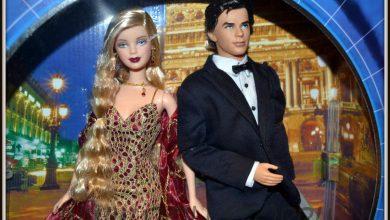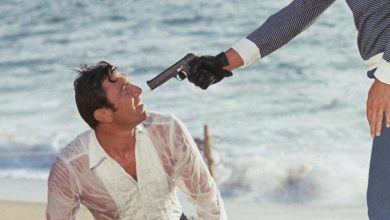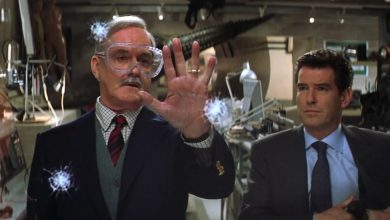Why Does Sean Connery Have a Yellow Face in “You Only Live Twice,” ?

In the world of cinema, certain artistic choices can spark curiosity and controversy. One such example is Sean Connery’s yellow face in the James Bond film “You Only Live Twice.” This article delves into the reasons behind this creative decision and explores the cultural context and impact of such choices. By examining the use of yellow face makeup and its connection to Japanese theater, we aim to provide a comprehensive understanding of why Sean Connery’s character had a yellow face in the film.
While it’s important to approach this topic with sensitivity and acknowledge the concerns raised about cultural representation, it is equally crucial to explore the intentions and historical context of artistic choices in films. By delving into the significance of yellow face makeup in “You Only Live Twice,” we can gain insight into the filmmakers’ intentions and the evolution of cultural representation in the industry.
Key Takeaways
- Sean Connery’s yellow face makeup in “You Only Live Twice” was a deliberate creative choice to capture the essence of the film’s Japanese setting and pay homage to the traditional art form of Kabuki.
- Kabuki, a stylized form of Japanese theater, influenced the decision to use yellow face makeup. It features elaborate makeup, including a white foundation called “oshiroi,” complemented with vibrant colors.
- While the use of yellow face makeup has been criticized for perpetuating racial stereotypes, it’s important to consider the historical context and evolving understanding of cultural representation.
Sean Connery’s Yellow Face in “You Only Live Twice”
The Role of Makeup in Film
Makeup plays a crucial role in the world of film, enhancing characters, transforming appearances, and contributing to the overall visual aesthetics. It allows actors to convincingly portray diverse roles and bring characters to life on the screen. In the case of “You Only Live Twice,” the decision to give Sean Connery a yellow face was a deliberate creative choice aimed at serving the storyline and capturing the essence of the film’s setting.
The Setting: Japan and Cultural Representation
“You Only Live Twice” is set in Japan and revolves around James Bond’s mission in the country. The film explores Japanese culture, customs, and traditions, aiming to immerse viewers in an exotic and unfamiliar environment. By giving Sean Connery’s character a yellow face, the filmmakers intended to evoke the traditional Japanese theatrical art form called Kabuki.
Kabuki: The Inspiration
Kabuki is a highly stylized form of Japanese theater characterized by elaborate makeup, vibrant costumes, and exaggerated facial expressions. Traditionally, male actors in Kabuki portray both male and female roles. The makeup used in Kabuki includes a white foundation called “oshiroi” applied to the face, which is often complemented with vibrant colors to accentuate specific features and express emotions.
In “You Only Live Twice,” Sean Connery’s yellow face makeup was a nod to Kabuki’s artistic tradition. The intention was to infuse the film with a touch of Japanese culture and pay homage to the unique visual elements of Kabuki theater. It aimed to add authenticity to the portrayal of the Japanese setting and create a memorable and visually striking experience for the audience.
Cultural Sensitivity and Interpretations
While the use of yellow face makeup in “You Only Live Twice” was intended as an artistic homage, it is important to consider the issue of cultural sensitivity. Yellow face, historically associated with racial stereotypes, has been a source of controversy and criticism. Some argue that the use of such makeup perpetuates harmful stereotypes and reinforces racial biases.
It is crucial to approach this topic with sensitivity and acknowledge the valid concerns raised by those who perceive the use of yellow face as offensive. The context of “You Only Live Twice” must be understood within the era it was made, recognizing the evolving understanding of cultural representation and the need for increased inclusivity and respect for different ethnicities.
The Legacy of “You Only Live Twice”
Impact and Reception
Despite the controversy surrounding Sean Connery’s yellow face makeup, “You Only Live Twice” remains a significant installment in the James Bond franchise. Upon its release in 1967, the film garnered commercial success and maintained the popularity of the series. It is remembered for its extravagant sets, thrilling action sequences, and Bond’s encounters with iconic characters like Ernst Stavro Blofeld.
Evolution of Cultural Representation
Since the release of “You Only Live Twice,” there has been a notable shift in the film industry regarding cultural representation. With a greater emphasis on inclusivity and the recognition of diverse perspectives, filmmakers today strive to portray different cultures and ethnicities in a more authentic and respectful manner. This evolution reflects society’s growing awareness and commitment to promoting inclusivity and diversity on the screen.
FAQ
1. Why did Sean Connery have a yellow face in “You Only Live Twice”?
In “You Only Live Twice,” Sean Connery’s yellow face makeup was a creative choice made by the filmmakers to capture the essence of the film’s setting in Japan. The intention was to evoke the traditional Japanese theatrical art form known as Kabuki, which features elaborate makeup and vibrant colors. By incorporating elements of Kabuki into the film, the creators aimed to add authenticity and create a visually striking experience for the audience. It’s important to note that the use of yellow face makeup has been a subject of controversy due to its historical associations with racial stereotypes. While the intention behind its use in this film was artistic, it’s essential to approach the topic with sensitivity and acknowledge the evolving understanding of cultural representation.
2. Was the yellow face makeup in “You Only Live Twice” offensive?
The use of yellow face makeup in “You Only Live Twice” has sparked discussions about cultural sensitivity. While the intention behind the makeup was to pay homage to the traditional Japanese art form Kabuki, it’s important to consider the historical context and evolving understanding of cultural representation. Yellow face makeup has historically been associated with racial stereotypes, and its use in film has been criticized for perpetuating harmful biases. Some viewers may find the portrayal offensive due to the potential reinforcement of racial stereotypes. It’s crucial to approach the topic with sensitivity and respect different perspectives while recognizing the ongoing efforts in the film industry to promote inclusivity and diversity.
3. How did the use of yellow face makeup contribute to the portrayal of Japanese culture?
The use of yellow face makeup in “You Only Live Twice” aimed to immerse viewers in the Japanese culture depicted in the film. By drawing inspiration from Kabuki, a traditional Japanese theatrical art form, the filmmakers sought to capture the visual aesthetics and rich traditions of Japan. Kabuki is known for its elaborate makeup and vibrant colors, and the use of yellow face makeup was a nod to this artistic tradition. It helped create a unique and visually striking representation of the Japanese setting, adding authenticity and enhancing the overall cinematic experience. However, it’s essential to approach such artistic choices with sensitivity and consider the potential impact on cultural representation.
4. How has cultural representation evolved in the film industry since “You Only Live Twice”?
Since the release of “You Only Live Twice” in 1967, there has been a significant evolution in cultural representation within the film industry. The industry has recognized the importance of authentic and respectful portrayals of different cultures and ethnicities. Filmmakers today strive for greater inclusivity, aiming to tell stories that reflect the diversity of our global society. Efforts have been made to cast actors from diverse backgrounds and consult cultural experts to ensure accurate and respectful depictions. Furthermore, audiences now demand more nuanced and culturally sensitive narratives, leading to a greater awareness of the impact of representation on society. This shift reflects the ongoing commitment to promoting inclusivity, diversity, and accurate cultural representation in films.
5. What other films have faced criticism for their portrayal of different cultures?
Several films throughout history have faced criticism for their portrayal of different cultures. One notable example is “Breakfast at Tiffany’s” (1961), where Mickey Rooney’s portrayal of a Japanese character using heavy makeup and exaggerated features was widely criticized as racially insensitive. Another example is “The Last Airbender” (2010), which received backlash for the casting of white actors in lead roles for characters originally depicted as non-white. These controversies highlight the importance of cultural sensitivity and the need for authentic representation in the film industry. As society progresses, there is a growing recognition of the impact that inaccurate or offensive portrayals can have on marginalized communities.
6. How have filmmakers responded to criticism regarding cultural representation?
Filmmakers have responded to criticism regarding cultural representation by taking steps to improve diversity and inclusivity in their productions. This includes engaging in more extensive casting processes that prioritize actors from the cultural backgrounds being portrayed. Collaborating with cultural consultants and experts has also become more common to ensure accurate depictions and respectful narratives. Additionally, there has been a shift towards empowering storytellers from underrepresented communities to share their own stories authentically. These efforts reflect a commitment to learning from past mistakes, fostering a more inclusive industry, and creating films that better represent the diverse world we live in.
7. How has audience perception influenced the approach to cultural representation in films?
Audience perception has played a significant role in shaping the approach to cultural representation in films. With the rise of social media and increased connectivity, audiences now have a platform to voice their opinions and concerns more easily. Filmmakers and studios are more attuned to audience expectations and demands for accurate and respectful portrayals of different cultures. The power of audience backlash and calls for better representation has led to increased accountability and a greater focus on inclusivity within the industry. As a result, filmmakers are increasingly aware of the impact their portrayals have on audiences and strive to create narratives that resonate positively with diverse viewers.
8. Are there any positive aspects to the portrayal of Japanese culture in “You Only Live Twice”?
Yes, despite the controversy surrounding the use of yellow face makeup, “You Only Live Twice” does have positive aspects regarding the portrayal of Japanese culture. The film offers a visually stunning representation of Japan, showcasing its unique architecture, landscapes, and traditions. It introduces audiences to the art of Kabuki and its distinct visual style. The inclusion of Japanese characters and elements in the storyline also provides opportunities for cultural appreciation and understanding. While the yellow face makeup remains a point of debate, the film’s broader portrayal of Japanese culture can be seen as an attempt to immerse viewers in the country’s rich heritage and create an engaging cinematic experience.
9. How has the understanding of cultural sensitivity evolved since the release of “You Only Live Twice”?
The understanding of cultural sensitivity has evolved significantly since the release of “You Only Live Twice.” The film was a product of its time, and the approach to cultural representation has since undergone substantial changes. There is now a greater recognition of the importance of respectful and accurate portrayals of different cultures. The entertainment industry has become more aware of the potential harm caused by stereotypes and cultural appropriation. Efforts are being made to promote cultural exchange and collaboration, ensuring that stories are told in a way that respects and honors diverse cultural perspectives. The ongoing evolution of cultural sensitivity reflects the progress in society’s understanding and commitment to inclusivity and respect.
10. How can films strike a balance between artistic choices and cultural sensitivity?
Striking a balance between artistic choices and cultural sensitivity requires a thoughtful approach from filmmakers. It involves engaging in extensive research, consulting cultural experts, and collaborating with diverse voices during the creative process. Filmmakers should aim to understand and respect the cultural context they are representing, avoiding harmful stereotypes and offensive portrayals. By prioritizing inclusivity and authenticity, filmmakers can create narratives that honor the richness of different cultures while pushing artistic boundaries. Open dialogue and listening to feedback from audiences and marginalized communities are essential in creating a balance between artistic expression and cultural sensitivity in films.
Conclusion
The use of yellow face makeup in “You Only Live Twice” represents a complex intersection of artistic choices, cultural representation, and historical context. While the intention was to evoke the traditional Japanese theater form of Kabuki and create an immersive cinematic experience, it is crucial to approach such choices with sensitivity and acknowledge the evolving understanding of cultural representation in the film industry.
As society progresses, the film industry has become more attuned to the importance of accurate and respectful portrayals of different cultures. Efforts are being made to promote inclusivity, diversity, and authentic storytelling. By critically examining past artistic choices like the yellow face makeup in “You Only Live Twice,” we can learn from history and foster a more inclusive and culturally sensitive approach to filmmaking, ensuring that diverse voices are heard and celebrated on the screen.









